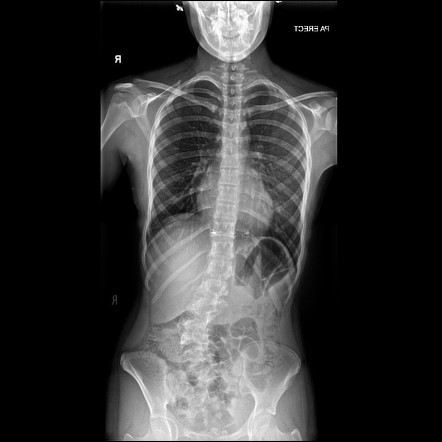Congenital Scoliosis: Understanding Causes, Symptoms, and Treatment
What is congenital scoliosis?
Congenital scoliosis is a complex spinal deformity that occurs during fetal development, resulting in abnormal curvature of the spine. It is present at birth and is characterized by vertebral malformations or abnormalities. This condition affects approximately 1 in 1,000 live births, making it a relatively rare form of scoliosis. Understanding the causes, diagnosis, and treatment options for congenital scoliosis is crucial in providing appropriate care and support to affected individuals.
Causes and Risk Factors
Congenital scoliosis can be associated with several genetic syndromes, each characterized by specific genetic mutations or abnormalities that affect spinal development. Here are some of the potential genetic syndromes commonly associated with congenital scoliosis:
VACTERL association: VACTERL is an acronym representing a group of birth defects that frequently occur together, including vertebral anomalies, anal atresia, cardiac defects, tracheoesophageal fistula, renal anomalies, and limb abnormalities. The exact cause of VACTERL association is unknown, but it is believed to involve a combination of genetic and environmental factors.
Klippel-Feil syndrome: This syndrome is characterized by the fusion or abnormal segmentation of two or more cervical vertebrae. It is caused by mutations in the GDF6 or GDF3 genes and can present with additional features such as short stature, low hairline, and facial asymmetry.
Diastrophic dysplasia: Diastrophic dysplasia is a rare genetic disorder caused by mutations in the SLC26A2 gene. It affects the development of cartilage and bone, resulting in skeletal abnormalities, including severe scoliosis, short stature, joint contractures, and ear deformities.
Marfan syndrome: Marfan syndrome is an inherited connective tissue disorder caused by mutations in the FBN1 gene. While scoliosis is not a primary feature of Marfan syndrome, it can occur in some individuals. Other common manifestations include tall stature, long limbs, joint hypermobility, and cardiovascular abnormalities.
Neurofibromatosis type 1 (NF1): NF1 is a genetic disorder caused by mutations in the NF1 gene. It is characterized by the development of neurofibromas (benign tumors) along the nerves. Scoliosis can occur in individuals with NF1, along with other features like café-au-lait spots, neurofibromas, and learning disabilities.
Jarcho-Levin syndrome: This rare genetic disorder is characterized by abnormal vertebral segmentation, resulting in multiple vertebral defects. It is caused by mutations in genes involved in the Notch signaling pathway, such as DLL3 and MESP2. Jarcho-Levin syndrome is associated with severe scoliosis and other spinal deformities.
It is important to note that congenital scoliosis can also occur in the absence of a specific genetic syndrome, and in such cases, the cause may be multifactorial or unknown. Genetic testing and evaluation by a geneticist can help determine the underlying genetic factors contributing to congenital scoliosis in individual cases.
Symptoms and Diagnosis
The symptoms of congenital scoliosis can vary depending on the severity and location of the spinal abnormalities. Common signs include an uneven waistline, shoulder or hip asymmetry, uneven leg lengths, or a visible curve in the spine. Diagnosis is typically made through a combination of physical examinations, medical history review, and imaging tests such as X-rays, CT scans, or MRI scans.
ScoliSMART Treatment Options for Congenital Scoliosis
Treatment for congenital scoliosis depends on various factors, including the severity of the curvature, age of the patient, and associated complications. In mild cases, close monitoring, genomic testing, and the ScoliSMART Activity Suit may be sufficient. For more severe cases, treatment options may additionally include nighttime bracing to prevent curve progression, scoliosis-specific therapy to improve spinal flexibility and strength, and in some cases, surgical intervention to correct the spinal curvature and stabilize the spine.
Living with Congenital Scoliosis
Congenital scoliosis can pose challenges, but with early detection, appropriate treatment, and ongoing management, individuals with this condition can lead normal, fulfilling lives. It is important to connect with a ScoliSMART doctor to develop a comprehensive treatment plan tailored to the individual’s needs.

